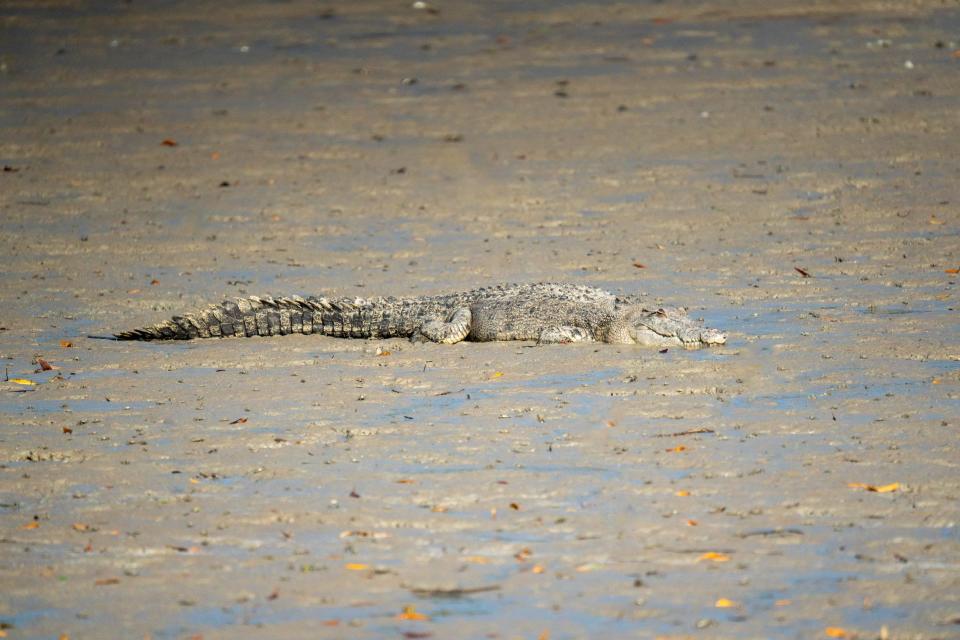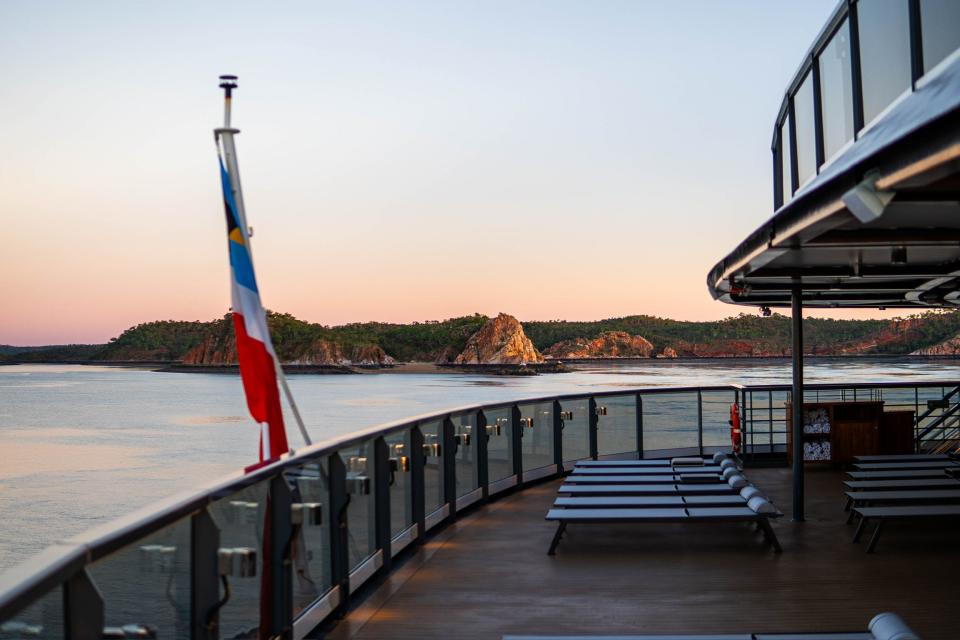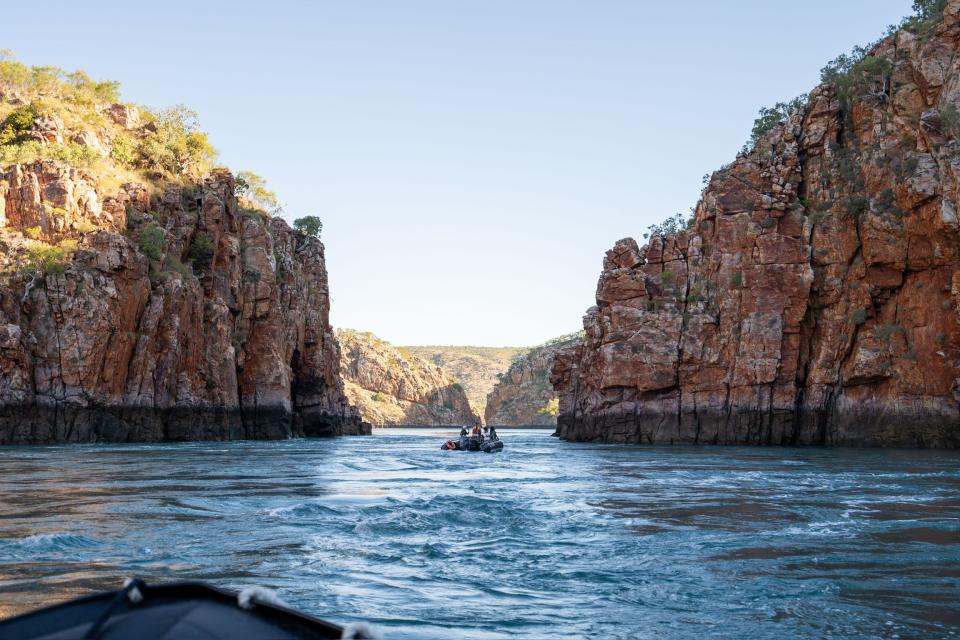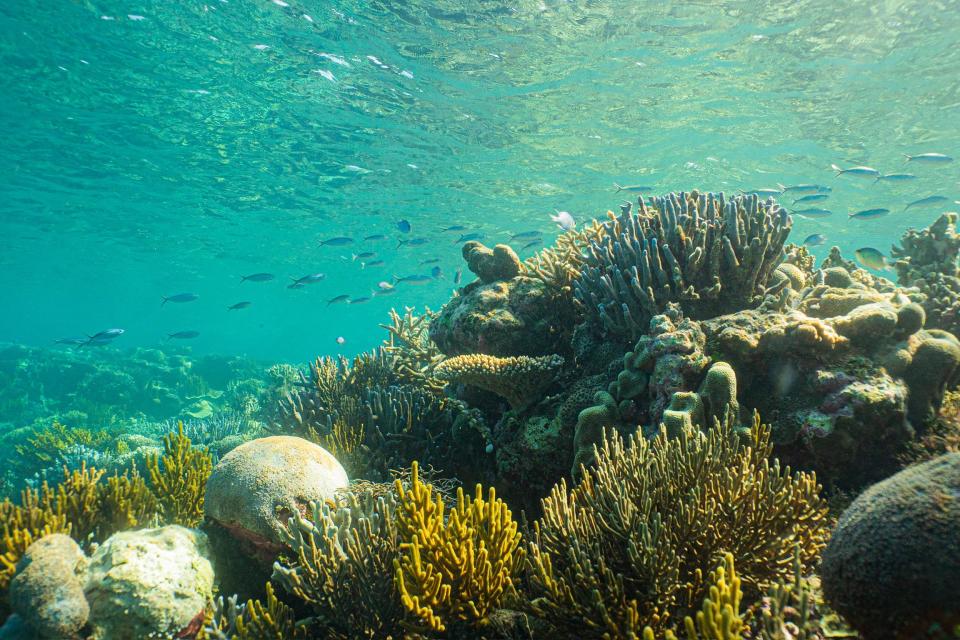At first, all I could see was what looked like a light gray stick.
But as our Zodiac boat slowly approached a mud bank in Western Australia’s Kimberley region, a thick, scaly tail and a mouth that appeared to be curled in a jagged smirk came into view. “Ladies and gentlemen, we have a crocodile,” said Robin West, General Manager and VP of Expedition Operations and Planning for Seabourn, who was driving.
The reptile was the first of six or seven saltwater crocodiles we saw during a tour of Hunter River and Porosus Creek in late June (there was some debate about the final tally among my companions). The area, also home to mangroves, mudskippers and other wildlife was one of the stops on our 10-day trip through the Kimberley aboard Seabourn Pursuit, the cruise line’s newest expedition vessel.
After about two hours in the roughly 90-degree heat, I was beat by the time we got back to the ship. I took a cue from some of the crocodiles we’d seen lounging in the sun and spent much of the rest of the day reading and admiring the view from the vessel’s shaded open decks.
Cold-weather destinations like Antarctica and the Arctic get a lot of love among expedition cruises, but there are perks to exploring a warmer locale.


Expedition plus pleasure cruise
My Kimberley itinerary combined the kinds of educational and immersive activities nature lovers expect from an expedition with elements that felt like a pleasure cruise.
“It can definitely be very relaxing,” said Claire Maguire, a travel agent and franchise owner at Cruise Planners.
The temperatures hovered between 80 and 90 degrees during my trip, with sunshine nearly every day. As a result, when I wasn’t in a Zodiac or exploring various ports on foot, I often sat on my suite balcony or ate meals at outdoor tables by the ship’s infinity pool, surrounded by sandstone peaks and turquoise water.


By contrast, when I took an Antarctica cruise in December, the temperatures were milder than I expected but still too chilly to comfortably spend much time on the outer decks.
“It does feel more like a vacation, I think,” Maguire said. “Sometimes the cold weather can seem a little bit more like work. This one is a little bit more laid back, it’s slow paced, it’s relaxed.” On my cruise, we only disembarked once a day most of the time, giving guests time to attend lectures about the region from expedition team members, visit the spa or gym, or just laze around.
The luxury line also pampered guests in a way that made the adventure more cushy.
One afternoon, after venturing to see the Horizontal Falls in Talbot Bay – a sideways waterfall effect caused by water squeezing through cliff passages – we cruised toward another Zodiac that our guide said may have broken down. But as we approached the boat, occupied by other members of the expedition team and crew, they presented us with Champagne and popsicles (that wouldn’t be the last time either).


What are the other benefits of warm-weather expeditions?
Different destinations mean different gear, and with warm weather you can leave the long underwear and parkas at home.
“You obviously have to pack a lot less specific clothing,” said Maguire. “That’s another advantage. You don’t have to take a lot of heavy layers or anything like that, which is nice.”
Getting in and out of Zodiacs felt less of a production than in Antarctica, for instance, where I had to dress in base layers, waterproof pants, boots, a hat, and more every time I disembarked.


There are some essentials travelers should have, though, including sunscreen, sunglasses and a sunhat. I forgot that last one and would have likely burned were it not for the kindness of other folks onboard with extras. Seabourn and many other operators have packing lists for reference, as well.
Maguire also recommended wearing long sleeves, particularly if you plan to swim. Warm-weather destinations generally make getting in the water easier and more pleasant (no disrespect to the polar plunge). We even did so in the Kimberley, where swimming is only possible in select places due to crocodiles.
One morning, we went snorkeling at Ashmore Reef in water that had been hovering around the high 70s. Roughly 45 minutes of swimming among coral, fish and blue sea stars passed in what felt like 10.
And if penguins and polar bears are the faces of Antarctic and Arctic expeditions, respectively, crocodiles may hold that distinction in the Kimberley. But there’s plenty more for wildlife enthusiasts to watch for, from brahminy kites to nurse sharks.
How much does an expedition in Kimberley cost?
Prices vary by operator, sailing date, room category and other factors, but a 10-day Kimberley expedition with Seabourn departing on June 27, 2025, currently starts at $10,999 per person based on double occupancy. The fare includes meals, wines and spirits, Wi-Fi and more.


Nature can make you feel small: You should seek that feeling when traveling
Where else can I take a warm-weather expedition?
The Kimberley’s not the only option if the cold isn’t your thing. Cruise operators offer itineraries in the Galapagos Islands off the coast of Ecuador, and Indonesian islands like Bali and the Raja Ampat archipelago, which Maguire noted “is an amazing location for snorkeling and diving.”
She also recommended destinations like Africa, where she said guests could combine a cruise with a safari on land, and the Mediterranean, where she went hunting for truffles and visited a horse farm on a recent expedition.
“You definitely do more off-the-beaten-path activities (than a regular cruise),” she said.
The reporter on this story received access to this event from Seabourn. USA TODAY maintains editorial control of content.
Nathan Diller is a consumer travel reporter for USA TODAY based in Nashville. You can reach him at ndiller@usatoday.com.
This article originally appeared on USA TODAY: Laid-back adventure: What warm-weather expedition cruises are like







